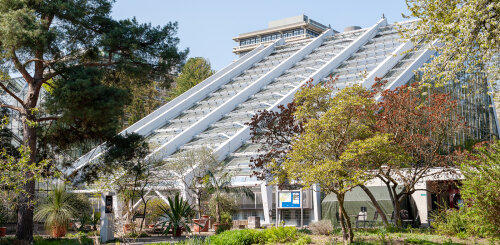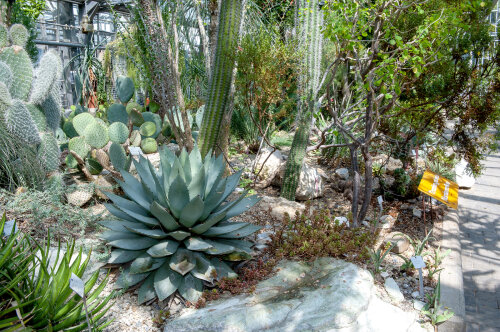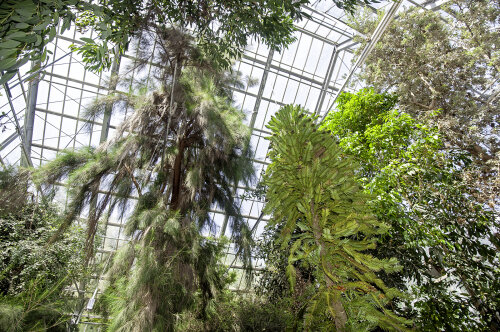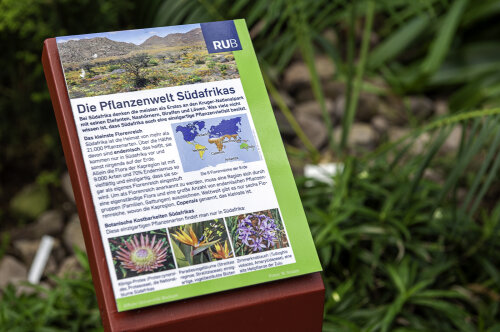If you fancy a botanical journey around the world or are simply looking for peace and tranquility in the countryside, the Botanic Garden of the Ruhr-University Bochum offers you an exotic oasis that is worth a visit at any time of year. Located in the suburb of Querenburg, in the southeast of the city of Bochum, the Botanic Garden stretches across the southern slope of the Ruhr-University Bochum campus since 1971. Covering an area of 13 hectares, it is home to over 10,000 plant species, making it one of the largest botanical gardens in Germany.

In the tropical house, visitors encounter exotic plants from the tropical rainforests of America, Africa and Asia. In addition to wild fig trees, mangroves, palms, ferns, bromeliads and orchids, you will also find tropical fruit trees. For example, the cocoa tree (Theobroma cacao, Malvaceae), without which there would be no chocolate, the marvellous vanilla and the coffee bush, which need no further explanation.

The Desert House, the Australia House and the South Africa House are adjacent to the Tropical Glasshouse. In the Desert House, you can observe the amazing strategies that plants in dry regions have "come up with" over the course of evolution to get by with little water. Almost everyone knows that cacti store water in their thick, juicy, fleshy shoots. However, very few people are aware of the fact that cacti only exist naturally in the Americas and the Caribbean. In the African part of the Desert House, visitors will find unusual to bizarre plants such as the spurges, which look deceptively similar to cacti but are not.

The Australia House primarily displays hard-leaved plants that are typical of the dry regions of Australia. Accordingly, many acacias, banksias and eucalyptus trees can be found here, as well as the legendary Wollemia (Wollemia nobilis, Araucariaceae), which was only discovered in 1994 in a remote gorge of the Wollemi National Park near Sydney.

South Africa is home to more than 21,000 plant species. Over half of these are endemic, meaning that they only occur in South Africa and nowhere else on earth. With 9,000 species and 70% endemism, the flora of the Cape region alone is so diverse and unique that it is even categorised as its own floral kingdom, known as "Capensis".
The Botanical Garden of the Ruhr-Universität Bochum also has a lot of exciting things to offer outside the display glasshouses. Every year, the colourful ornamental plantings are a very popular attraction. However, the main part of the outdoor area is organised geographically and shows various plant communities of Europe, Asia and America and how these have changed over time. These include North American, Asian and European forest communities as well as natural forest-free sites such as coastal dunes and wetland communities.
The Chinese Garden is a very special attraction of the Botanic Garden of the Ruhr-University Bochum. This beautiful cultural gem is known far beyond the city. Established in 1990, the Chinese garden was a partnership gift from Tongji University Shanghai to Ruhr-Universität Bochum on the occasion of its 25th anniversary. It covers an area of 1000 square metres. As a classical scholar's garden in the style of simple, nature-loving southern Chinese horticulture, the Chinese Garden offers a place of peace and meditation.